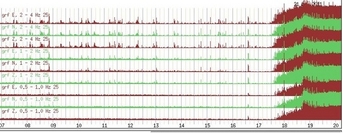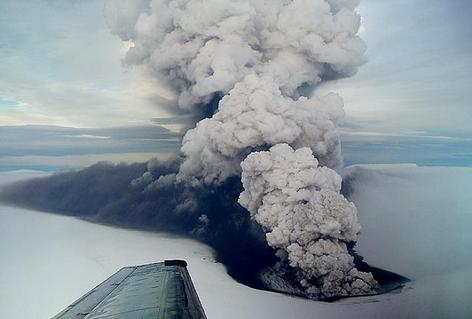|
Grímsvötn, which is one of Iceland's most active volcanoes last erupted in 2004. The majority of Grímsvötn lies 200 m beneath the vast Vatnajökull ice-cap. Due to its location beneath the ice-cap there are several signs of an impending eruption and the volcanoes unrest. Melting of the ice by hydrothermal activity often causes what the Icelandics call a jökulhlaup which is a glacial outburst flood. Melting of the ice can also cause depressions of the ice surface. This 2011 episode started at ~17:30 UTC on the 21st May. Initially the eruption was contained benath the ice, but by ~21:00 UTC the eruptive cloud reached the surface and subsequently rose to an altitude of 20 km (~65,000 ft). It has currently closed the airspace in Iceland temporarily and a jökulhlaup is expected to be created as a result of the eruption.  Seismic activity indicates start of eruption after 17:30. So....the big question is. Will this eruption disrupt the air traffic in Europe like the eruption of Eyjafjallajökull in 2010? The answer, currently, is probably not. The current simulations are predicting that the ash will travel to the east and then north. There are also some unconfirmed reports that the activity is 'slowing down'. The following is a link to a webcam of the eruption, which may or may not be working! http://live.mila.is/grimsvotn/ An interesting fact about this volcano is that the Grimsvotn volcanic centre has fissures which trend through it NE to SW. One of these fissures is known as the Lake fissure, this fissure is renowned for its lava producing eruption of 1783 in which it released the the most lava seen and experienced by humans in recent history. It also released huge amoutns of Sulphur Dioxide causing an unusually hot summer for the time period. Overall, it caused widespread effects throughout Europe and is attributed to have killed ~30,000 people in Britain as a result.
Ben (in mag we trust)
22/5/2011 11:19:58 am
Hey pal, does the glacial outburst as a result fo this eruption or anyother eruptions(presumably) have any implications for North Atlantic in terms of salinity and the north atlenatic deep water formation>
ben ( in mag we trust)
22/5/2011 11:20:41 am
*presumably bigger
Tom - Volcano-blog
23/5/2011 05:17:13 am
The ice-cap in question is roughly in the middle of Iceland. I don't pretend to know a lot about ocean circulation but I don't think any glacial outburst flood from Iceland will play a major part because of positioning and quantities of water involved. 15/5/2012 04:16:09 am
The active volcano in iceland makes it warm enough to enjoy a pleasant vacation. The beautiful scenic view on the drive makes it more pleasant journey to iceland. Comments are closed.
|
Archives
July 2023
|


 RSS Feed
RSS Feed